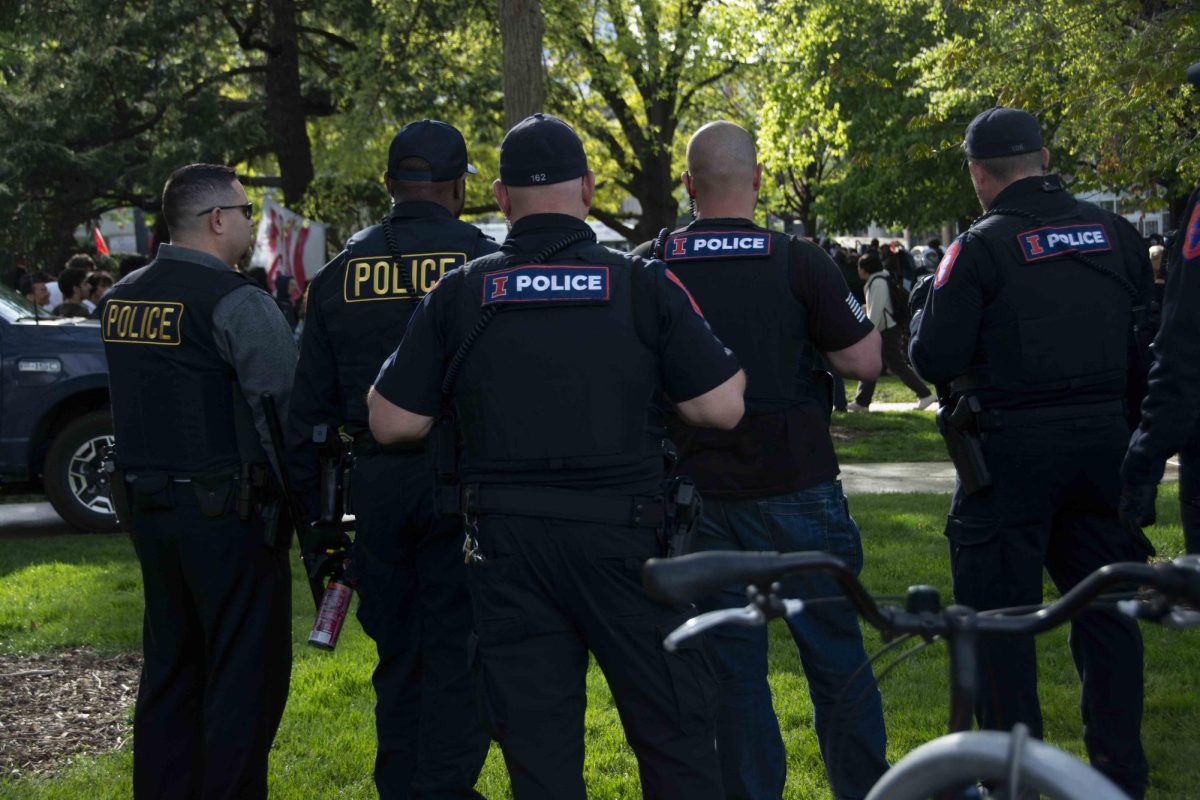Things were different in 1941.
Televisions were rare, radios were large and the one-room schoolhouse was still common, as were home visits from schoolteachers.
George Hast’s third-grade teacher visited his house on Dec. 7, 1941 — a Sunday — with news that the Japanese had bombed Pearl Harbor.
“I can still remember that Sunday morning,” said Hast, 77, a Champaign resident originally from La Harp, Ill. “It was cloudy outside. You remember things like that.”
Though young at the time, Harp recalls much about the Second World War. Many of those memories revolve around the four-engine bomber dubbed “The Flying Fortress.” Created by Boeing, roughly 12,700 B-17s were built between 1935-45.
Get The Daily Illini in your inbox!
As a kid, Hast built a scale model of the B-17 out of balsa wood and tissue paper. He also had a scrapbook containing pictures of aircraft like the B-17. In 2008, 63 years after production of the B-17 stopped, Hast even got the chance to fly in one.
That opportunity came the last time the Aluminum Overcast arrived in Champaign on tour. This weekend, it’s back in Champaign.
Constructed on May 18, 1945, the Aluminum Overcast was built as a weapon of war.
After just one step inside the aircraft through the tiny hatch near the back, the efficient design of something constructed for mass production for the military is immediately obvious.
A 6-foot person must slouch when navigating the fuselage, and people of any height will have to avoid touching the exposed cables along the ceiling that connect the flight controls to the flaps. Touch those, chuckled flight engineer Larry Gray, and you’ll be flying the airplane.
It is that level of authenticity that Hast said brought hundreds of people to Willard Airport two years ago just to walk through the bomber while it was on the ground, an option still available this weekend for $5.
“That’s what they have to do. They have to get in there and feel it, how cramped it is,” said Hast, a member of the Experimental Aircraft Association (EAA), which owns the Aluminum Overcast.
While the tight spaces, vibrations, smells and sounds are real, pilot George Daubner said there are obviously many conditions a present-day ride cannot recreate.
As a rule of thumb, there’s a 3-degree temperature drop for every 1,000-foot increase in elevation, said Daubner.
“So if they’re up at 30,000 feet, that’s 90 degrees cooler than the temperature at the surface. So they very often saw negative 30 to negative 40 degrees in a totally unheated, uninsulated fuselage,” Daubner said, adding that oxygen masks would have been used beginning at roughly 10,000 feet. But that’s not it.
“And people were shooting at them, trying to kill them,” Daubner said.
Those who “fly the fortress” today will not be exposed to much danger, as the roughly 20-minute long rides will travel nowhere near 10,000 feet in a flak-ridden sky.
The interaction between veterans, their families and others is just one of many things the Aluminum Overcast brings to the present. Another is the realization of just how different life in the ‘40s was from today.
“Airliners today, you take two little fingers and move the controls around, because it’s all hydraulically driven, where this thing, it’s cables and pulley’s, and your muscles,” Daubner said.
“There’s nothing built today that requires the same types of skills that this airplane does,” added pilot Kent Holiday.
“It’s the sound (of the engines),” Hast said. “I get all choked up when they taxi in.”




